Push Ups vs Press Ups: Are they the Same Thing?
Push ups have been popularized by the military, with soldiers being required to perform them as part of the physical fitness tests. The exercise has also been used by athletes, fitness enthusiasts, and everyday people looking to improve their fitness level.
Push-ups and press-ups are a great way for fitness enthusiasts looking to increase upper body strength and work multiple muscles such as the triceps, pectoral muscles, and shoulders. When done with proper form, it also has the ability to strengthen the lower back and core muscles through engagement of the abdominal muscles.
These are versatile exercises that can be performed anywhere and require no equipment, making them a popular choice for people who want to workout at home or while traveling. The exercise can be modified to increase or decrease the difficulty level, such as by doing them on an incline or decline, or by placing the hands closer together.
Push-ups vs Press-ups: Is There a Difference?
The push up and press up exercise, interestingly, are just the same exercise that only differ in namesake.
These exercises are basically done in the same movement and target the same muscles of the upper body.
The term “push up” is the American term of the activity, which was first used between the years 1905 and 1910, while “press up” is the British term found later, between 1945 and 1950.
Because of this timeline, we can assume that the name “push up” may be the original term for the movement and will be called as such in the following discussion.
What is a Push-up?
A push-up is a bodyweight exercise that primarily targets the chest, shoulders, and triceps muscles. It is a fundamental exercise that can be performed virtually anywhere without the need for any equipment.
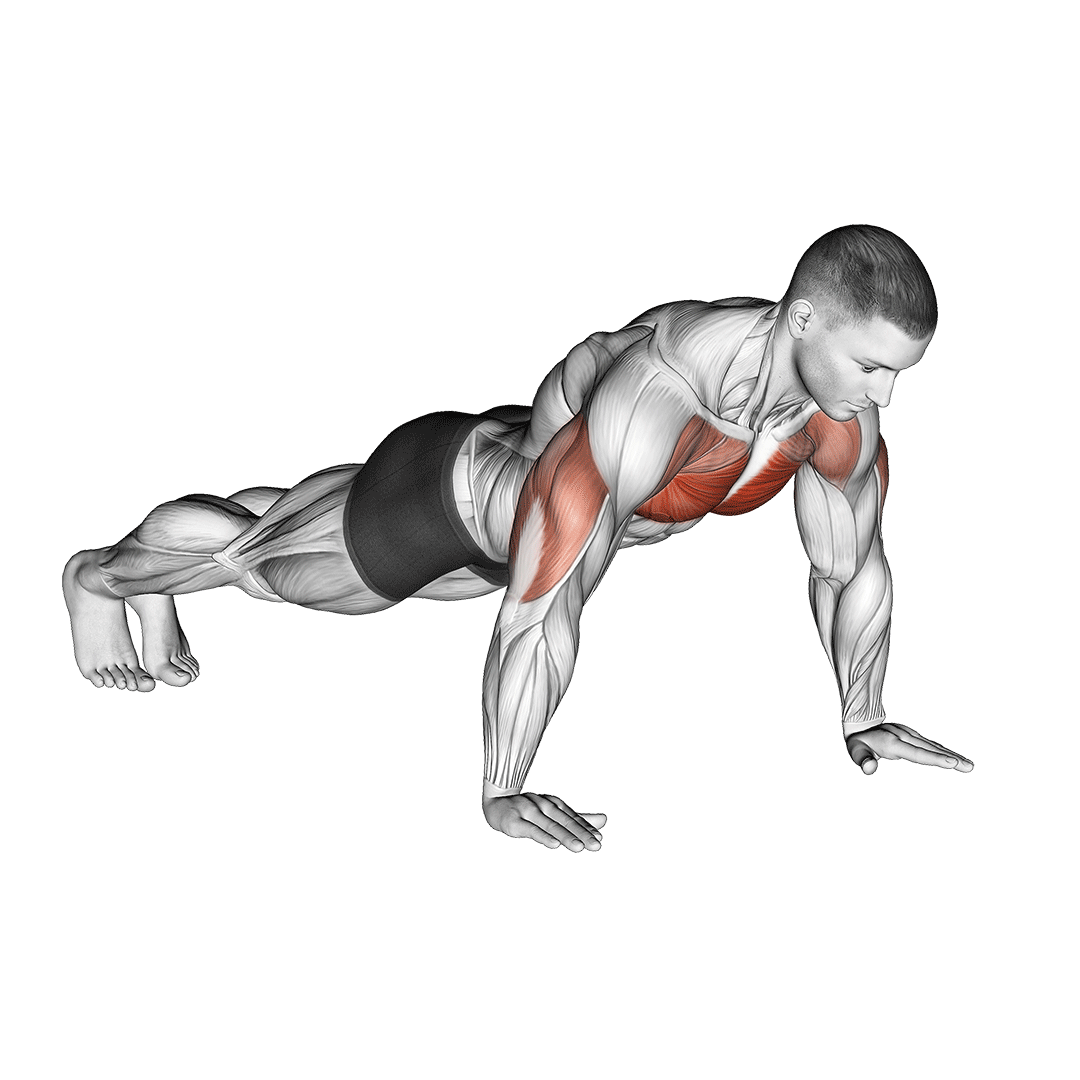
This movement not only works the chest, shoulders, and triceps muscles but also engages the core, glutes, and back muscles, making it a full-body exercise.
Push-ups can be modified to make them easier or harder, depending on one's fitness level, making them a versatile exercise for people of all fitness levels.
Push-ups can be altered by performing them on an incline or decline, or by bringing the hands closer together or further apart to target different musculature.
Push-ups are an effective exercise for building upper body strength, improving posture, and increasing muscular endurance.
How to Perform a Push-up
To perform a push-up, one should start by positioning themselves in a plank position with the hands slightly wider than shoulder-width apart and the feet together. The arms should be fully extended, with the elbows close to the body.
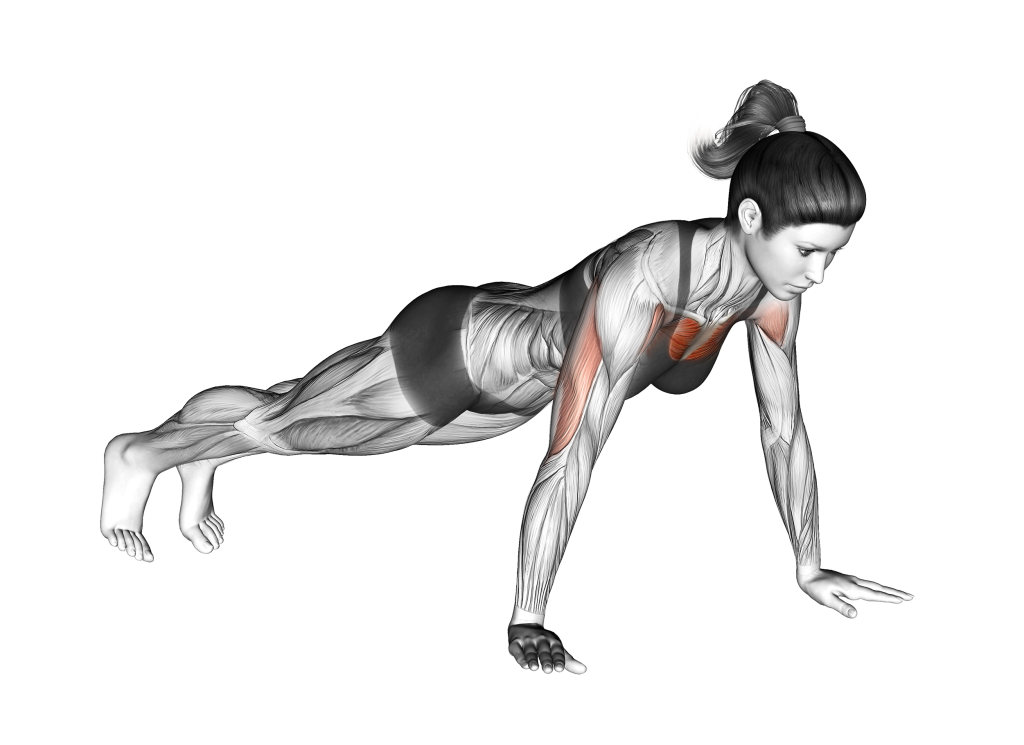
The body should be kept in a straight line with the core engaged to prevent the lower back from sagging. Then, the exercise should be initiated by bending the elbows and lowering the body toward the ground until the chest nearly touches the floor.
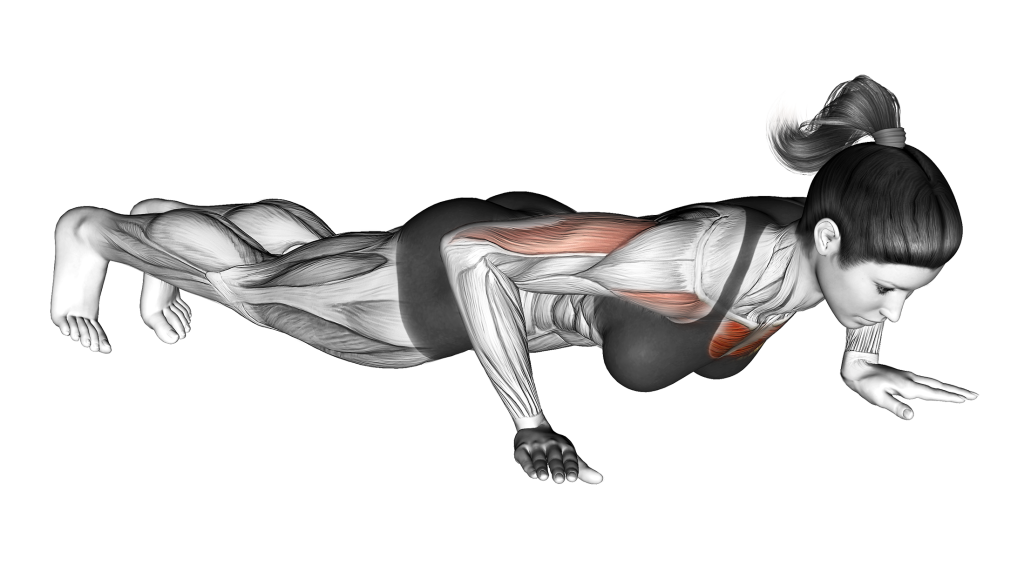
Throughout the movement, one should keep the elbows close to the body. Once the chest is close to the ground, the individual pushes the body back up to the starting position by straightening the arms.

The core should be engaged, and the body should be kept in a straight line throughout the entire movement.
The movement is repeated for the desired number of reps until a set is completed.
Muscles Worked by a Push-up
Push-ups are a versatile and effective compound bodyweight exercise that target the muscles of the upper body, especially the chest, shoulders, and triceps.
A functional exercise that can help improve overall strength and stability, the push-up engages multiple muscle groups at the same time, making it a great choice for anyone looking to get in shape.
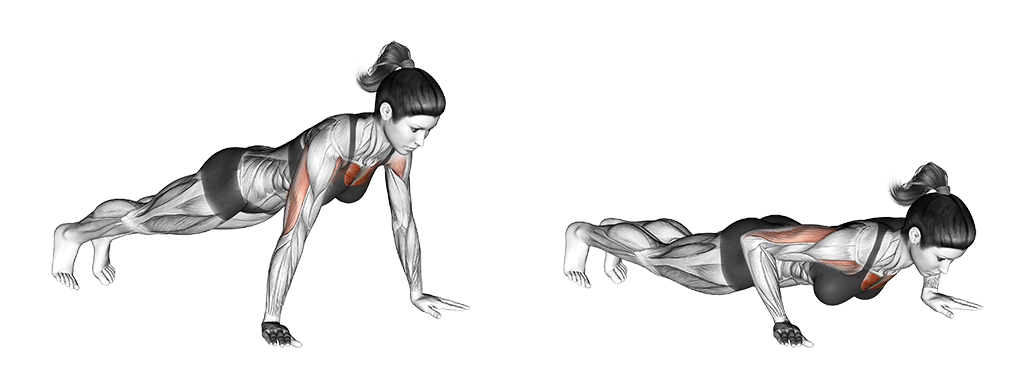
The chest muscles, or pectoralis major, are the primary muscles worked during push-ups. The pressing motion of the exercise activates both the upper and lower portions of the chest, helping to build size, strength, and definition in this important muscle group.
The shoulders, or deltoids, are also heavily recruited during push-ups, particularly the front portion of the muscle. This helps to develop the rounded, capped appearance that many people desire in their shoulders.
In addition to the chest and shoulders, push-ups also engage the triceps, or the muscles on the back of the upper arm. These muscles are used to straighten the arm during the upward phase of the push-up, providing a challenging and effective workout for the arms.
Other muscles worked during push-ups include the abdominals, which are activated to stabilize the body throughout the exercise, as well as the back muscles, which help to maintain the form throughout the duration of the activity.
Benefits of Push-ups
Builds Upper Body Strength
Push-ups are one of the best exercises to build upper body strength. It targets the chest, shoulders, triceps, and core muscles.
Performing push-ups regularly can strengthen these muscle groups and improve the overall upper body strength. This, in turn, can help an individual perform other exercises more efficiently.
Improves Posture
Push-ups require the individual to engage the core muscles, which can help improve posture. Good posture not only makes an individual look more confident but also reduces the risk of developing back pain or other musculoskeletal problems.
Increases Bone Density
Resistance exercises like push-ups can help increase bone density. This is especially important for women, who are at a higher risk of developing osteoporosis.
By strengthening the bones, push-ups can help prevent fractures and other bone-related problems.
Boosts Metabolism
Push-ups are a compound exercise that can help increase the metabolic rate. When performing push-ups, the individual engages multiple muscle groups at once, which burns more calories than isolation exercises.
This, in turn, can help lose weight or maintain a healthy body weight.
Enhances Cardiovascular Health
Push-ups are a compound exercise that engages multiple muscle groups simultaneously, making it a great cardiovascular workout.
Regularly performing push-ups can help increase heart rate and blood flow, improving overall cardiovascular health and reducing the risk of heart disease and other related health issues.
Variations of Push-ups
1. Diamond Push-ups
Adding diamond push-ups to the workout routine can help improve upper body strength and overall fitness.
To perform a diamond push-up, begin in a plank position with the hands positioned directly under the shoulders, forming a diamond shape with the index fingers and thumbs.
Lower the body towards the ground by bending the elbows, keeping the back straight, and engaging the core.
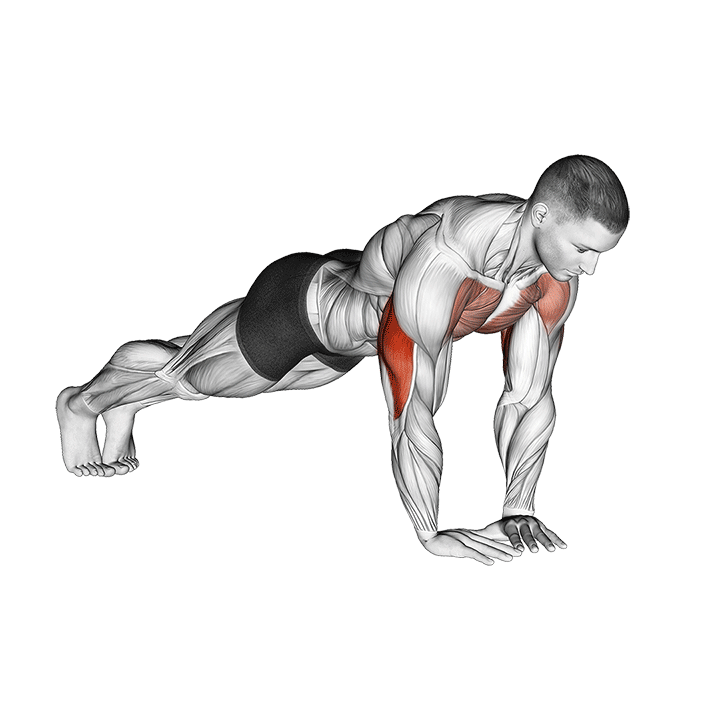
Once the chest reaches the top of the hands, pause for a moment before pushing back up to the starting position by straightening the arms.
Remember to keep the elbows tucked in towards the sides to target the triceps effectively. If the individual finds diamond push-ups too challenging, modify the exercise by doing them on the knees or by performing them against a wall or elevated surface.
Gradually increase the number of repetitions, or sets, as the individual becomes more comfortable with the exercise.
2. Incline Push-ups
Incline push-ups can be a great addition to any workout routine, helping to improve upper body strength and stability.
To perform an incline push-up, start by finding an elevated surface such as a bench, step, or sturdy chair. Place the hands on the surface slightly wider than shoulder-width apart and walk the feet back until the body is in a straight line from head to heels.
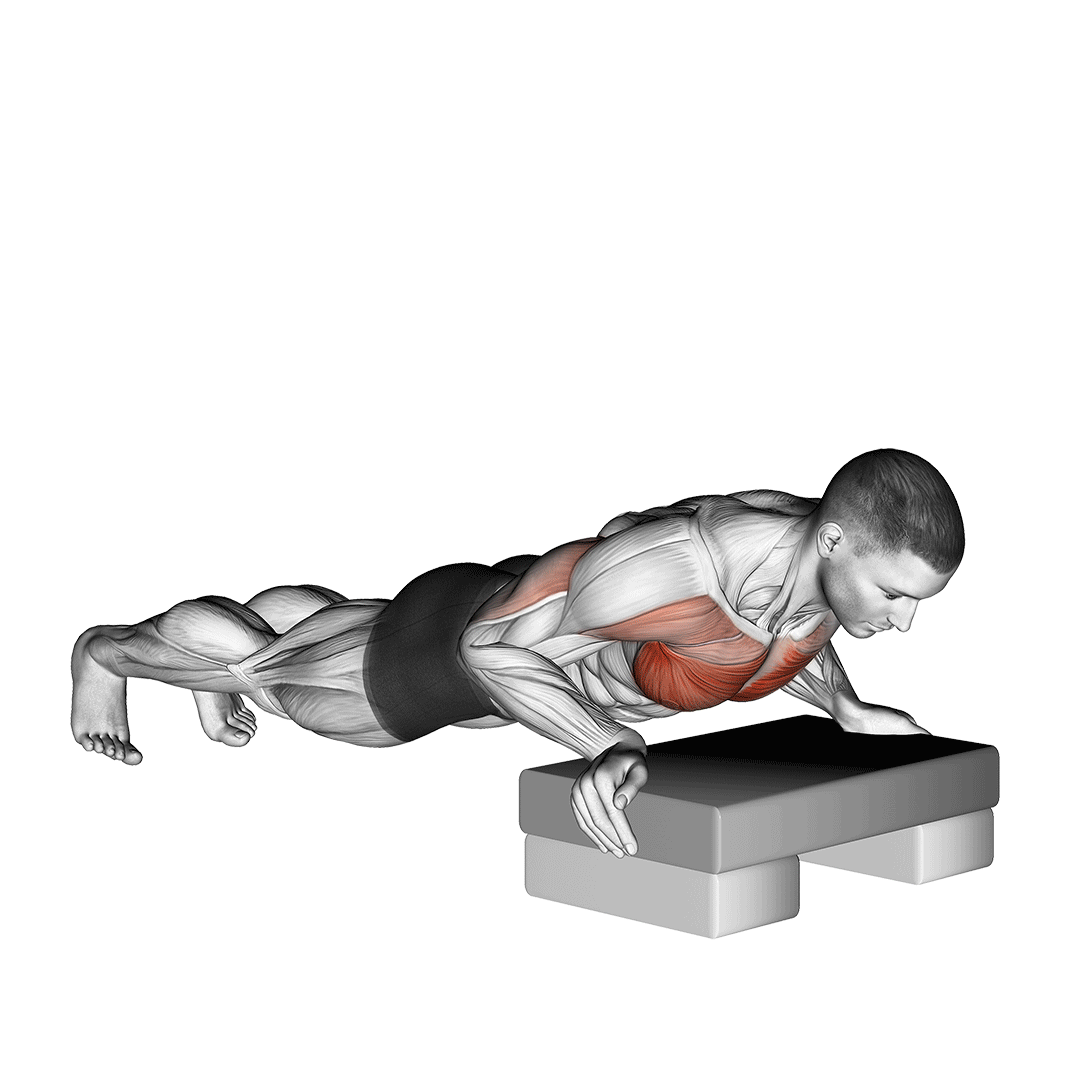
Lower the body toward the bench by bending the elbows while keeping the core engaged and the back straight.
Pause when the chest is a few inches from the bench, and then push back up to the starting position by straightening the arms.
Repeat the exercise for the desired number of repetitions.
To make the exercise easier, use a higher surface, and to make it more challenging, use a lower surface.
3. Decline Push-ups
Decline push-ups are a more challenging variation to the push-up as it places the individual in a position where more weight is used as resistance.
When possible, adding decline push-ups to an exercise routine can help build upper body strength and increase muscular endurance.
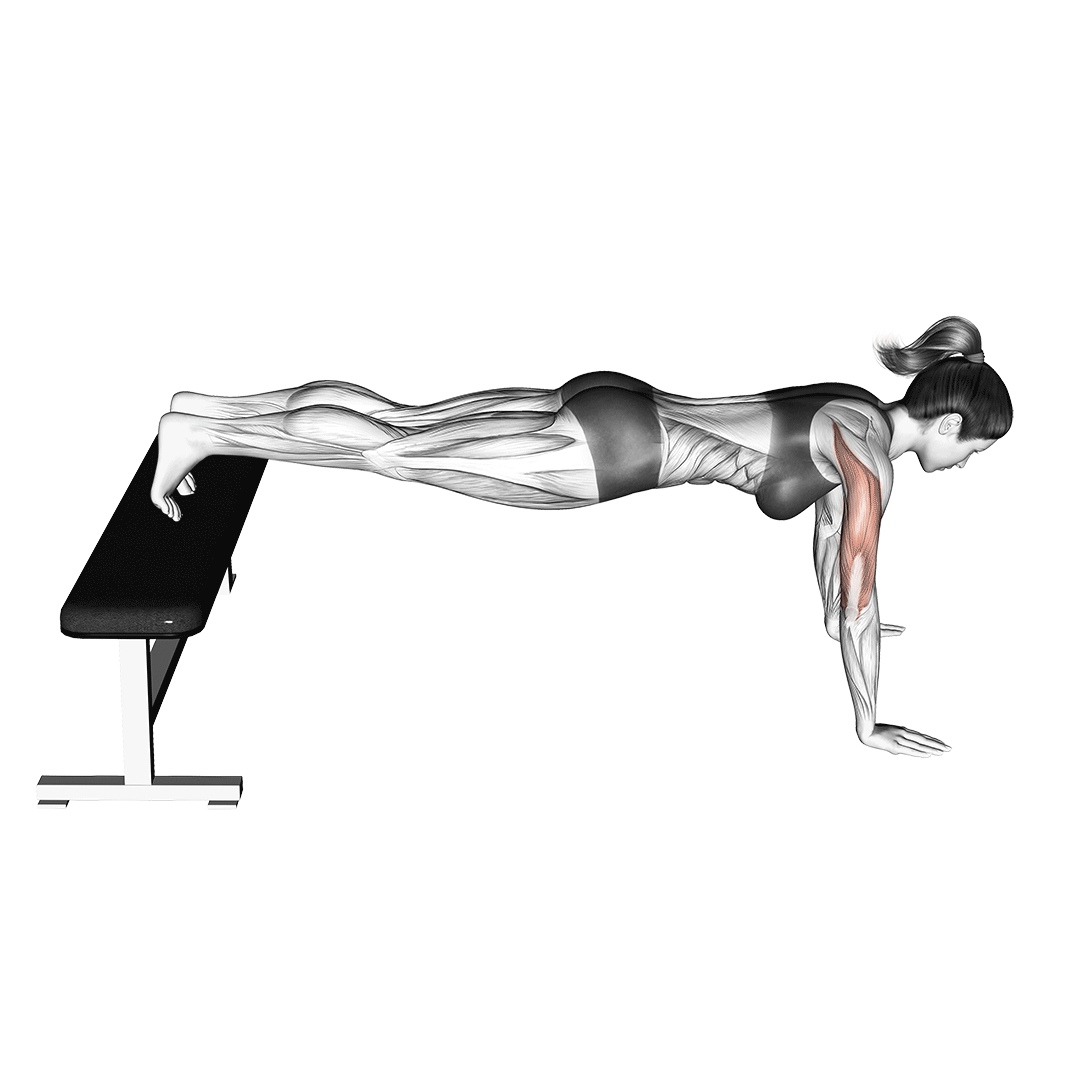
To perform a decline push-up, start by finding a sturdy elevated surface such as a bench, step or sturdy chair. Place the feet on the elevated surface and assume a push-up position with the hands on the ground, slightly wider than shoulder-width apart.
Keep the core engaged and the back straight as the body is lowered towards the ground by bending the elbows. Pause when the chest is a few inches from the ground and then push back up to the starting position by straightening the arms.
Repeat the exercise for the desired number of repetitions.
If the individual finds decline push-ups too challenging, use a less steep elevated surface or try performing them with the knees on the ground.
Final Thoughts
Push-ups are a classic and highly effective exercise that can be performed by individuals of all fitness levels.
They require no equipment, can be done anywhere, and work multiple muscle groups, including the chest, shoulders, triceps, and core. In addition to their physical benefits, push-ups also help to improve overall body control, stability, and coordination.
However, it is important to ensure proper form to prevent strain or injury to the shoulders, wrists, or lower back. Variations such as incline push-ups, decline push-ups, and diamond push-ups can also be incorporated to target different muscle groups and add variety to a workout routine.
Overall, push-ups are a great exercise option that can be easily incorporated into a fitness routine. With proper form and variations, they can help improve strength, posture, and overall health.
References
1. Cogley RM, Archambault TA, Fibeger JF, Koverman MM, Youdas JW, Hollman JH. Comparison of muscle activation using various hand positions during the push-up exercise. The Journal of Strength & Conditioning Research. 2005 Aug 1;19(3):628-33.
